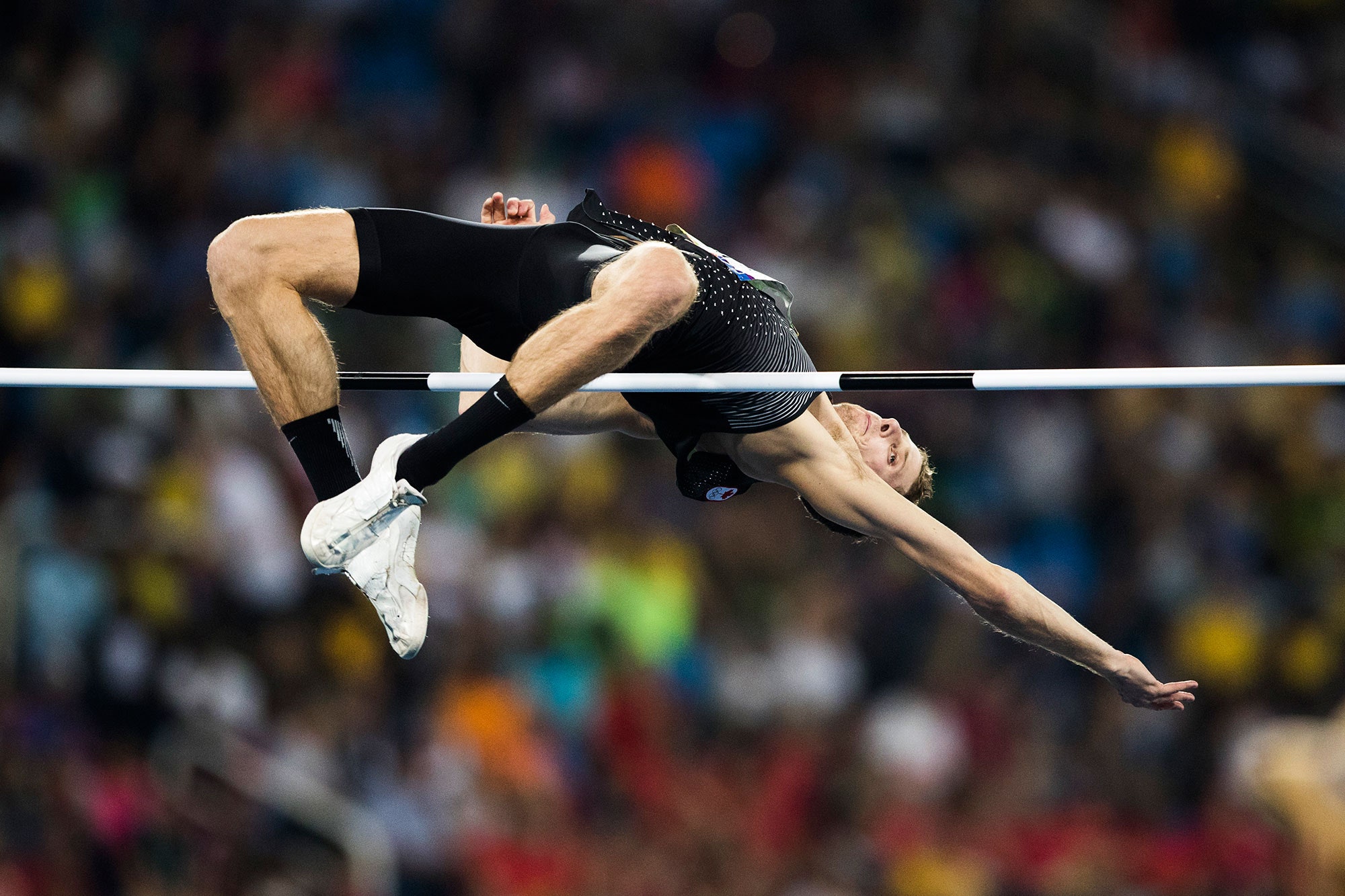The High Jump is a field and track event where competitors jump unaided over a horizontal bar put at measured heights without removing it. The high jump is practiced in various forms. For instance, the Fosbury Flop and pole vault (though it’s also a sport on its own).
The high jump is a sport for both men and women and has been featured in Olympic Athletics Programme. It was first played in the 19th century in Scotland and joined the Olympics in 1928.
Ancient high jumpers used either a scissor technique or an elaborate straight-on approach. Discover more about the high jump sport below.

What Is High Jump Sport?
It is a track and field sport where competitors jump over a horizontal bar placed at specific heights without displacing it. The modern high jump is practiced by placing a bar between two standards and a crash mat for landing.
Athletes run towards the bar and apply a Fosbury Flop jumping method. This jumping method requires you to lead headfirst and have your back to the bar. This sport has evolved and incorporated various techniques since ancient times to the modern or current form.
Pole Vault and High Jump are the two vertical clearance events featured in the Olympic athlete Programme. The former is contested at the IAAF World Indoor Championships and World Championships in Athletics.
It is also common at track and field meetings. High Jump first participated in Olympics in 1928.
Purpose Of High Jump
A high jump aims to leap or clear over progressively increasing heights between two standards placed at about 13ft (4m) apart.
The high jumper will be allowed three attempts to clear each given height. Most participants will use Fosbury flop to jump over the bar.
Origin
The high jump was first recorded in the 19th century in Scotland. Jumpers at the time were using either a scissor technique or a straight-on approach. Later, the game kept changing, and they introduced a diagonal bar in the sport.
With the diagonal bar, the jumper had to throw in the first leg and the second leg over the bar to form a scissoring motion.
The game continued to evolve in the 20th century with the introduction of the George Horine technique- more like the diagonal bar approach but using the inner leg for take-off and thrusting the outer leg to lead the body sideways.
The straddle technique was another one where a jumper rotated their belly down around the bar. This made him get the highest and most efficient clearance of the bar at the time.

Fosbury Flop
The body mechanics that the jumper applies can make the difference between a good jump and a bad one. Fosbury flop is the most practiced and one of the best for the high jump.
It is deemed the most efficient way if jumpers have to push themselves over the bar. The efficiency of a particular Fosbury Flop( because there are variations) depends on athletics’ strengths, weaknesses, training, etc.
Approach
Just like any sport, approach matters a lot. A Fosbury Flop’s efficiency depends on how the jumper starts to run. The runner should start on the right of the mats left and putting their jump foot away from the mat.
The athlete should have about 8 to 10 step approach in total. It’s important that you mark your approach so that you find enough consistency.
Training
An ideal body for a high jumper is a tall person with long legs and limited body weight. High jumpers must be flexible and should have a strong lower body.
They don’t have to struggle to carry loads of weight as they jump-which makes it harder. To achieve this body, high jumpers will go through strenuous exercises to achieve the required body.
Speed
For a high jumper to be effective, they must work on their speed and speed endurance. If you have watched high jump competitions, then you know that it takes hours.
Therefore, participants should have the endurance to last them throughout the entire competition. Common splint endurance workouts include 200-, 400- and 800-meter training.
Other methods like ladder workouts or hill training, can be used for speed endurance.
World Records
Javier Sotomayer, a Cuban, is the current men’s world record holder after clearing 8ft ¼ inch or 2.45 m in 1993.
On the other hand, the women’s world record holder is Stefka Kostadinova from Bulgaria. She cleared 6ft 10 ¼ inch or 2.09 m in 1987.
The Olympic records are held by Charles Austin (men) and Yelena Slesarenko (women). They cleared 2.39m (7ft 10in) and 2.06(6ft 9in).
Conclusion
The high jump is a track and field sport where the participants propel themselves over increasing heights marked by a bar.
The bar is placed between two stands that are 4 m (13ft) apart. The jump being used today is the Fosbury Flop.







